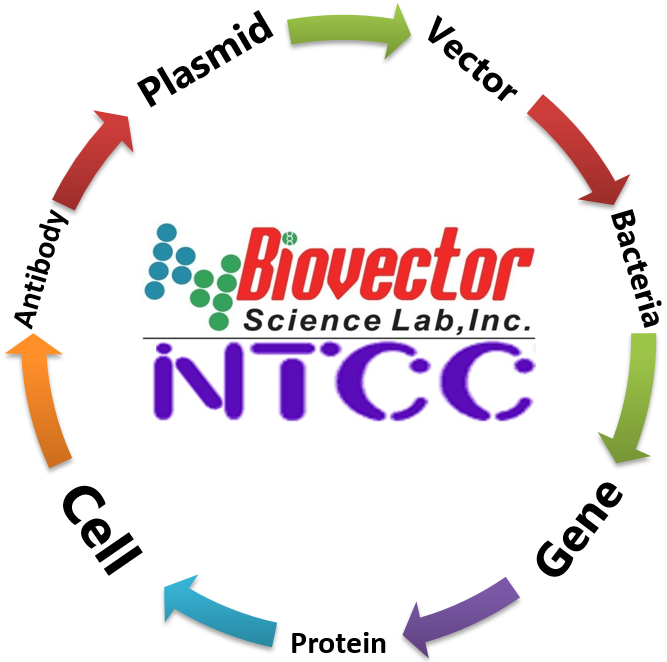人胰岛β干细胞Human pancreatic islet β stem cells BioVector NTCC质粒载体菌种细胞基因保藏中心
- 价 格:¥98735
- 货 号:人胰岛β干细胞Human pancreatic islet β stem cells
- 产 地:北京
- BioVector NTCC典型培养物保藏中心
- 联系人:Dr.Xu, Biovector NTCC Inc.
电话:400-800-2947 工作QQ:1843439339 (微信同号)
邮件:Biovector@163.com
手机:18901268599
地址:北京
- 已注册
人胰岛β干细胞Human pancreatic islet β stem cells BioVector NTCC质粒载体菌种细胞基因保藏中心 Human pancreatic islet β cells
Cat No.: NTCC596478
Beta cells (β cells) are a type of cell found in the pancreatic islets of the pancreas. They make up 65-80% of the cells in the islets.
Function
The primary function of a beta cell is to store and release insulin. Insulin is a hormone that brings about effects which reduce blood glucose concentration. Beta cells can respond quickly to spikes in blood glucose concentrations by secreting some of their stored insulin while simultaneously producing more.
Control of insulin secretion
Voltage-gated calcium channels and ATP-sensitive potassium ion channels are embedded in the cell surface membrane of beta cells. These ATP-sensitive potassium ion channels are normally open and the calcium ion channels are normally closed. Potassium ions diffuse out of the cell, down their concentration gradient, making the inside of the cell more negative with respect to the outside (as potassium ions carry a positive charge). At rest, this creates a potential difference across the cell surface membrane of -70mV.
When the glucose concentration outside the cell is high, glucose molecules move into the cell by facilitated diffusion, down its concentration gradient through the GLUT2 transporter.[1] Since beta cells use glucokinase to catalyze the first step of glycolysis, metabolism only occurs around physiological blood glucose levels and above. Metabolism of the glucose produces ATP, which increases the ATP to ADP ratio.[2]
The ATP-sensitive potassium ion channels close when this ratio rises. This means that potassium ions can no longer diffuse out of the cell.[3] As a result, the potential difference across the membrane becomes more positive (as potassium ions accumulate inside the cell). This change in potential difference opens the voltage-gated calcium channels, which allows calcium ions from outside the cell to diffuse in down their concentration gradient. When the calcium ions enter the cell, they cause vesicles containing insulin to move to, and fuse with, the cell surface membrane, releasing insulin by exocytosis.[4]
Other hormones secreted by beta cells
C-peptide, which is secreted into the bloodstream in equimolar quantities to insulin. C-peptide helps to prevent neuropathy and other vascular deterioration related symptoms of diabetes mellitus.[5] A practitioner would measure the levels of C-peptide to obtain an estimate for the viable beta cell mass.[6]
Amylin, also known as islet amyloid polypeptide (IAPP).[7] The function of amylin is to slow the rate of glucose entering the bloodstream. Amylin can be described as a synergistic partner to insulin, where insulin regulates long term food intake and amylin regulates short term food intake.
Pathology
Type 1 diabetes mellitus, also known as insulin dependent diabetes, is believed to be caused by an autoimmune response where the body's own immune system attacks the beta cells and destroys them. This means the body can no longer produce and secrete insulin into the blood and regulate the blood glucose concentration.
Type 2 diabetes mellitus, also known as non insulin dependent diabetes, is caused by many factors including: age; family history; obesity and consuming a diet high in simple sugars. The beta cells, however, can still secrete insulin but the body has developed a resistance and its response to insulin has declined. It is believed to be due to the decline of specific receptors on the surface of the liver and muscle cells which lose their ability to respond to insulin that circulates in the blood.[8][9]
Insulinoma is a rare tumor derived the neoplasia of beta cells. Insulinomas are usually benign, but may be medically significant and even life-threatening due to recurrent and prolonged attacks of hypoglycemia.
Diabetes mellitus can be experimentally induced for research purposes by streptozotocin[10] or alloxan,[11] which are specifically toxic to beta cells.
Human pancreatic islet β cells basal medium + 10% Foetal Bovine Serum (FBS) + 100 U/ml penicillin G sodium (option); 100 µg/ml streptomycin sulfate (option);
BioVector NTCC质粒载体菌种细胞蛋白抗体基因保藏中心
电话:+86-010-53513060
网址:www.biovector.net [Supplier来源] http://www.biovector.net
Cat No.: NTCC596478
Beta cells (β cells) are a type of cell found in the pancreatic islets of the pancreas. They make up 65-80% of the cells in the islets.
Function
The primary function of a beta cell is to store and release insulin. Insulin is a hormone that brings about effects which reduce blood glucose concentration. Beta cells can respond quickly to spikes in blood glucose concentrations by secreting some of their stored insulin while simultaneously producing more.
Control of insulin secretion
Voltage-gated calcium channels and ATP-sensitive potassium ion channels are embedded in the cell surface membrane of beta cells. These ATP-sensitive potassium ion channels are normally open and the calcium ion channels are normally closed. Potassium ions diffuse out of the cell, down their concentration gradient, making the inside of the cell more negative with respect to the outside (as potassium ions carry a positive charge). At rest, this creates a potential difference across the cell surface membrane of -70mV.
When the glucose concentration outside the cell is high, glucose molecules move into the cell by facilitated diffusion, down its concentration gradient through the GLUT2 transporter.[1] Since beta cells use glucokinase to catalyze the first step of glycolysis, metabolism only occurs around physiological blood glucose levels and above. Metabolism of the glucose produces ATP, which increases the ATP to ADP ratio.[2]
The ATP-sensitive potassium ion channels close when this ratio rises. This means that potassium ions can no longer diffuse out of the cell.[3] As a result, the potential difference across the membrane becomes more positive (as potassium ions accumulate inside the cell). This change in potential difference opens the voltage-gated calcium channels, which allows calcium ions from outside the cell to diffuse in down their concentration gradient. When the calcium ions enter the cell, they cause vesicles containing insulin to move to, and fuse with, the cell surface membrane, releasing insulin by exocytosis.[4]
Other hormones secreted by beta cells
C-peptide, which is secreted into the bloodstream in equimolar quantities to insulin. C-peptide helps to prevent neuropathy and other vascular deterioration related symptoms of diabetes mellitus.[5] A practitioner would measure the levels of C-peptide to obtain an estimate for the viable beta cell mass.[6]
Amylin, also known as islet amyloid polypeptide (IAPP).[7] The function of amylin is to slow the rate of glucose entering the bloodstream. Amylin can be described as a synergistic partner to insulin, where insulin regulates long term food intake and amylin regulates short term food intake.
Pathology
Type 1 diabetes mellitus, also known as insulin dependent diabetes, is believed to be caused by an autoimmune response where the body's own immune system attacks the beta cells and destroys them. This means the body can no longer produce and secrete insulin into the blood and regulate the blood glucose concentration.
Type 2 diabetes mellitus, also known as non insulin dependent diabetes, is caused by many factors including: age; family history; obesity and consuming a diet high in simple sugars. The beta cells, however, can still secrete insulin but the body has developed a resistance and its response to insulin has declined. It is believed to be due to the decline of specific receptors on the surface of the liver and muscle cells which lose their ability to respond to insulin that circulates in the blood.[8][9]
Insulinoma is a rare tumor derived the neoplasia of beta cells. Insulinomas are usually benign, but may be medically significant and even life-threatening due to recurrent and prolonged attacks of hypoglycemia.
Diabetes mellitus can be experimentally induced for research purposes by streptozotocin[10] or alloxan,[11] which are specifically toxic to beta cells.
Human pancreatic islet β cells basal medium + 10% Foetal Bovine Serum (FBS) + 100 U/ml penicillin G sodium (option); 100 µg/ml streptomycin sulfate (option);
BioVector NTCC质粒载体菌种细胞蛋白抗体基因保藏中心
电话:+86-010-53513060
网址:www.biovector.net [Supplier来源] http://www.biovector.net
- 公告/新闻




